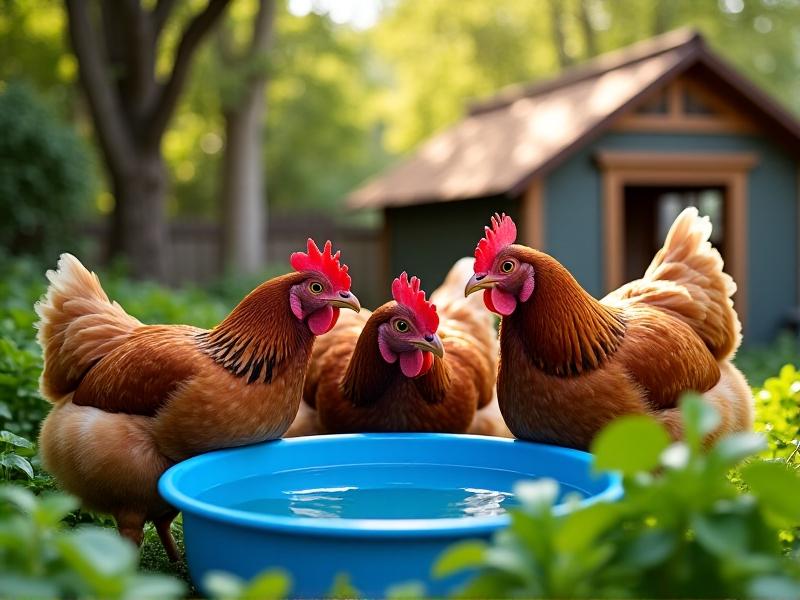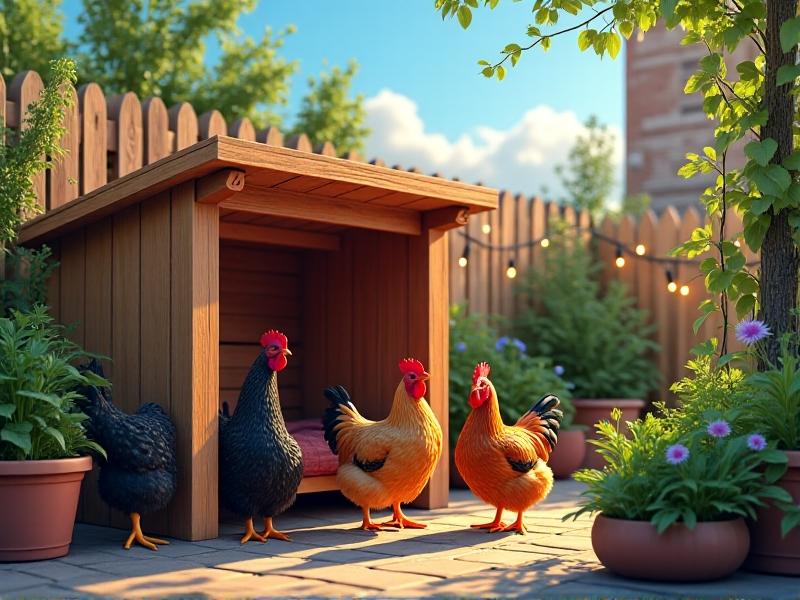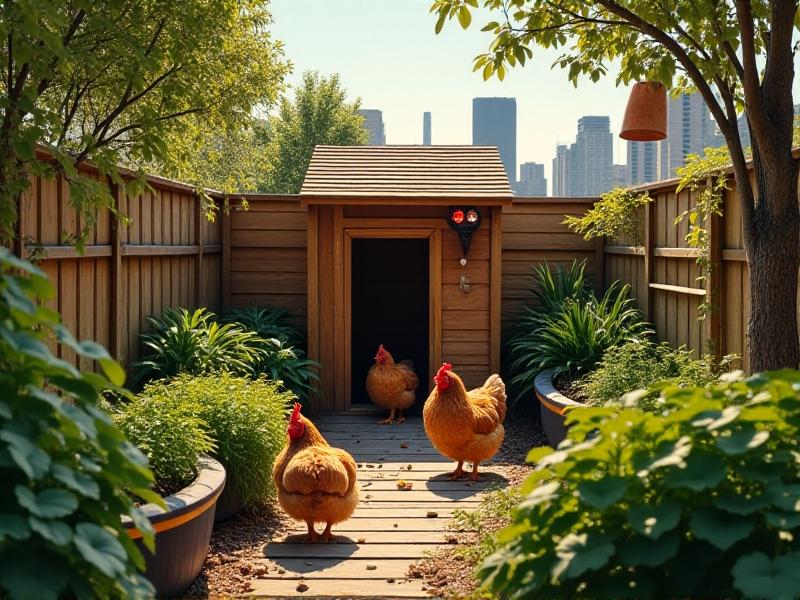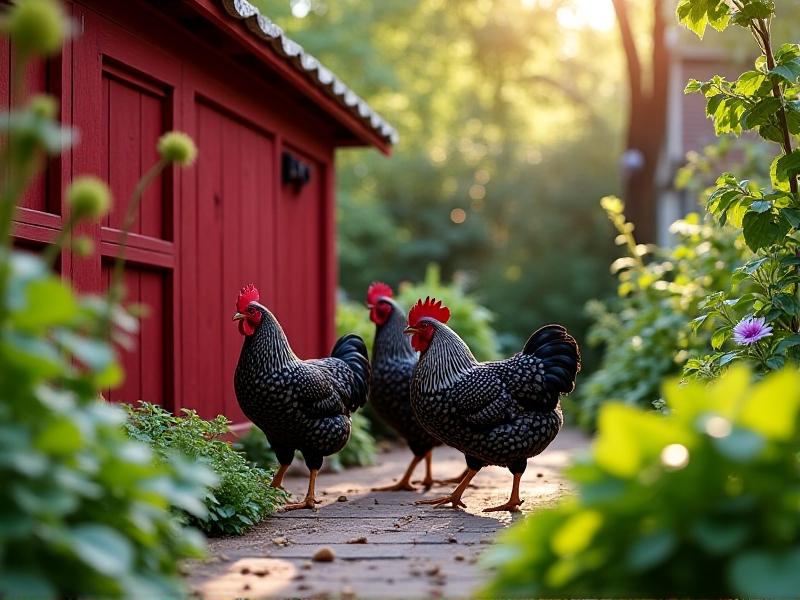Noise Reduction Materials: The Urban Chicken Keeper's Guide
Understanding the Clucking Conundrum: Why Noise Matters in Urban Chicken Keeping

Urban chicken keeping brings joy and fresh eggs, but clucks, squawks, and early-morning crowing can strain neighborly relations. Hens communicate constantly—egg-laying cackles, alarm calls, and territorial disputes all contribute to the soundtrack. Roosters, though often restricted in cities, amplify the issue. Sound travels easily in dense neighborhoods, where concrete fences and compact layouts reflect noise instead of absorbing it. Understanding chicken behavior and local acoustics is the first step toward harmony. Identifying peak noise times (dawn, egg-laying hours) and triggers (predators, overcrowding) helps tailor solutions that address the root cause, not just the symptoms.
Sound-Absorbing Materials: What Works Best for Coops and Runs

Selecting the right materials can dampen noise by up to 50%. Mass-loaded vinyl (MLV), a flexible but dense sheeting, blocks airborne sounds when layered under coop walls. Acoustic foam panels, often used in studios, absorb high-frequency noises like squawking. For eco-conscious keepers, recycled denim insulation offers sound absorption while regulating temperature. Avoid materials that trap moisture, like standard fiberglass batts, which can lead to respiratory issues in chickens. For runs, consider hanging burlap sacks filled with straw—these double as windbreaks and sound dampeners. Prioritize non-toxic, breathable options to ensure flock health and effective noise control.
DIY Noise Reduction Hacks for the Budget-Conscious Keeper

Affordable solutions abound for those willing to get creative. Line coop walls with old carpets or moving blankets—their thick fibers absorb mid-range frequencies. Hay bales placed strategically around the coop’s exterior scatter sound waves, while planted bamboo screens act as living sound barriers. For internal noise, repurpose egg cartons by stapling them to ceilings; their textured surfaces diffuse sound effectively. A “white noise” station near the coop, like a small fountain or wind chimes, can mask clucking without disturbing neighbors. These low-cost fixes prove that noise reduction doesn’t require a professional overhaul—just ingenuity and resourcefulness.
Strategic Coop Design: Layout and Landscaping to Minimize Sound

Coop placement is critical. Position the structure as far from property lines as possible, using garages or sheds as sound buffers. Elevate the coop to prevent ground-borne vibrations and orient windows away from neighbors. Inside, curved walls reduce sound reflection, while a slanted roof lined with corkboard deflects noise upward. Landscaping plays a dual role: evergreen shrubs like boxwood provide year-round sound absorption, while a gravel perimeter around runs crunches underfoot, deterring predators (and the resulting alarm calls). For urban settings, vertical gardens on coop walls add aesthetic appeal while dampening decibels.
Navigating Noise Ordinances and Being a Good Neighbor
Most cities cap allowable livestock noise at 60 decibels (equivalent to a dishwasher). Familiarize yourself with local ordinances—some prohibit roosters outright or mandate coop setbacks. Proactive communication is key: share eggs, invite neighbors to meet the flock, and explain noise-reduction efforts. Install a decibel meter app to monitor levels during peak times. If complaints arise, offer solutions like adjusting feeding schedules (distracting hens with treats at dawn) or adding extra insulation. Documenting your efforts builds goodwill and demonstrates responsibility, turning potential adversaries into allies.
Case Studies: Real-World Success Stories in Urban Noise Control
In Portland, Oregon, a keeper reduced complaints by 90% after wrapping her coop’s interior with MLV and planting a 6-foot-tall elderberry hedge. An Austin homeowner installed a “sound maze” of staggered pallets filled with soil and succulents around his run, scattering noise while providing habitat for pollinators. Meanwhile, a Chicago high-rise resident used modular acoustic panels on her balcony coop, which she rearranges seasonally. These examples show that context-specific solutions, whether high-tech or nature-driven, can create peaceful coexistence in diverse urban environments.
Maintaining a Quiet Coop: Long-Term Strategies and Upkeep
Regular maintenance ensures noise controls remain effective. Inspect insulation annually for moisture damage or pests. Replace acoustic foam every 3–5 years, as it compresses over time. Refresh landscaping barriers each spring—fast-growing plants like willow or bamboo require pruning to maintain density. Monitor flock behavior; overcrowding increases stress-induced noise, so rehome excess birds promptly. Seasonal adjustments matter too: add straw bales for winter sound insulation and install shade cloths in summer to keep hens cool (and quiet). A well-maintained coop isn’t just a sound investment—it’s a cornerstone of sustainable urban poultry keeping.








